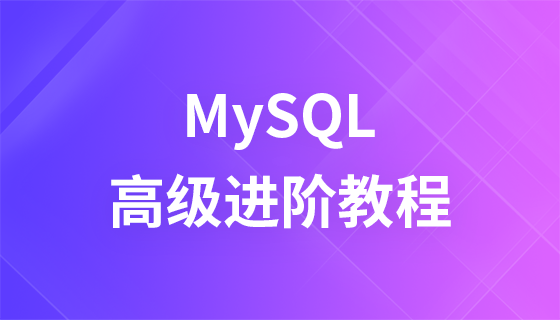goroutine泄露是指go程序中某些goroutine未正常退出,持续占用资源,最终可能导致内存耗尽和程序崩溃。1. 使用pprof工具诊断:导入net/http/pprof包并启动http服务后,通过go tool pprof获取goroutine profile,运行top命令查看阻塞最多的函数;2. 查看具体函数调用:使用list命令分析源码,识别阻塞点,如未发送数据的channel导致永久等待;3. 生成火焰图:输入web命令可视化调用栈,帮助定位问题;4. 对比profile快照:使用-base参数比较不同时间点的goroutine状态,发现增长异常的函数。避免泄露的方法包括:确保goroutine有明确退出条件、使用context.context控制生命周期、避免无缓冲channel的永久阻塞、使用sync.waitgroup同步以及为可能阻塞的操作设置超时。常见泄露场景包括channel操作不当、死锁、无限循环等。编写可测试的goroutine代码可通过接口、waitgroup、channel通信、context及避免全局状态等方式提升可控性和可观测性,从而减少泄露风险。

Goroutine泄露,简单来说,就是你的Go程序里启动了goroutine,但是这些goroutine执行完毕后没有退出,一直占用着资源。如果goroutine泄露严重,会导致内存耗尽,程序崩溃。诊断goroutine泄露的核心思路是找到那些“不应该存在”的goroutine。

使用pprof工具,配合一些分析技巧,可以有效地定位和解决goroutine泄露问题。

pprof实战分析goroutine泄露
首先,确保你的Go程序中导入了net/http/pprof包,并在某个地方启动了HTTP服务,例如:

import _ "net/http/pprof"
import "net/http"
import "log"
func main() {
go func() {
log.Println(http.ListenAndServe("localhost:6060", nil))
}()
// 你的程序逻辑
// ...
}然后,你可以使用go tool pprof来分析goroutine的profile。
获取goroutine profile:
go tool pprof http://localhost:6060/debug/pprof/goroutine
这将启动一个交互式的pprof shell。
查看goroutine数量:
在pprof shell中,输入top命令,可以查看占用goroutine最多的函数。
(pprof) top
Showing nodes accounting for 135, 99.26% of 136 total
flat flat% sum% cum cum%
135 99.26% 99.26% 135 99.26% runtime.gopark
1 0.74% 100.00% 1 0.74% runtime.futexsleep
0 0.00% 100.00% 135 99.26% main.myLeakyFunction
0 0.00% 100.00% 1 0.74% runtime.clone
0 0.00% 100.00% 1 0.74% runtime.futex
0 0.00% 100.00% 1 0.74% runtime.goexit
0 0.00% 100.00% 1 0.74% runtime.mcall
0 0.00% 100.00% 1 0.74% runtime.park_m
0 0.00% 100.00% 135 99.26% runtime.selectgo
0 0.00% 100.00% 135 99.26% runtime.signal_recvflat列显示了直接在这个函数中阻塞的goroutine数量,cum列显示了包括这个函数调用的其他函数在内的总goroutine数量。
查看调用关系:
使用list <function_name>命令可以查看函数的源代码,并显示哪些goroutine在其中阻塞。例如,查看main.myLeakyFunction:
(pprof) list main.myLeakyFunction
Total: 136
ROUTINE ======================== main.myLeakyFunction in /path/to/your/file.go
0 135 (flat, cum) 99.26% of Total
. . 9:func myLeakyFunction() {
. . 10: ch := make(chan int)
. . 11: select {
. . 12: case <-ch:
0 135 13: }
. . 14:}这显示了myLeakyFunction函数创建了一个channel,并在select语句中等待接收数据,但是没有发送数据,导致goroutine永久阻塞。
生成火焰图:
火焰图可以更直观地展示goroutine的调用关系。 在pprof shell中,输入web命令,pprof会自动打开一个网页,显示火焰图。
(pprof) web
火焰图的每一层代表一个函数调用,宽度代表该函数占用的时间或资源比例。你可以通过点击火焰图中的函数来查看更详细的信息。
对比快照:
在一段时间内多次获取goroutine profile,并进行对比,可以更容易地发现goroutine数量持续增长的函数。
go tool pprof -base <baseline_profile> <current_profile>
这将显示两个profile之间的差异。
如何避免goroutine泄露?
context.Context: 使用context.Context可以控制goroutine的生命周期,在需要的时候取消goroutine。sync.WaitGroup: 使用sync.WaitGroup可以等待一组goroutine完成。常见的goroutine泄露场景有哪些?
永久阻塞的channel操作: 例如,goroutine在一个空的channel上等待接收数据,但是没有其他goroutine会发送数据。
func leakyFunction() {
ch := make(chan int)
<-ch // 永久阻塞
}忘记关闭的channel: 如果goroutine在一个没有关闭的channel上循环接收数据,并且channel中没有数据,goroutine会一直阻塞。
func leakyFunction() {
ch := make(chan int)
for i := range ch { // 如果ch没有关闭,并且没有数据,goroutine会一直阻塞
println(i)
}
}死锁: 多个goroutine互相等待对方释放资源,导致所有goroutine都无法继续执行。
var mu1 sync.Mutex
var mu2 sync.Mutex
func leakyFunction1() {
mu1.Lock()
mu2.Lock() // 等待leakyFunction2释放mu2
println("leakyFunction1")
mu2.Unlock()
mu1.Unlock()
}
func leakyFunction2() {
mu2.Lock()
mu1.Lock() // 等待leakyFunction1释放mu1
println("leakyFunction2")
mu1.Unlock()
mu2.Unlock()
}无限循环: goroutine进入一个没有退出条件的无限循环。
func leakyFunction() {
for { // 无限循环
// ...
}
}如何编写可测试的goroutine代码?
编写可测试的goroutine代码,意味着你需要能够控制和观察goroutine的行为。以下是一些技巧:
使用接口: 使用接口可以更容易地mock和stub外部依赖,例如数据库连接、网络请求等。
type DataFetcher interface {
FetchData() (string, error)
}
type MyFetcher struct{}
func (m *MyFetcher) FetchData() (string, error) {
// 实际的网络请求
return "data", nil
}
func processData(fetcher DataFetcher) {
go func() {
data, err := fetcher.FetchData()
if err != nil {
// 处理错误
return
}
// 处理数据
println(data)
}()
}
// 测试代码
type MockFetcher struct {
Data string
Err error
}
func (m *MockFetcher) FetchData() (string, error) {
return m.Data, m.Err
}
func TestProcessData(t *testing.T) {
mockFetcher := &MockFetcher{Data: "test data", Err: nil}
processData(mockFetcher)
// ...
}使用sync.WaitGroup: 使用sync.WaitGroup可以等待goroutine完成,确保测试代码不会在goroutine完成之前退出。
func processData(data string, wg *sync.WaitGroup) {
defer wg.Done()
// 处理数据
println(data)
}
func TestProcessData(t *testing.T) {
var wg sync.WaitGroup
wg.Add(1)
go processData("test data", &wg)
wg.Wait() // 等待goroutine完成
}使用channel进行通信: 使用channel可以更容易地观察goroutine的输出和状态。
func processData(data string, result chan string) {
// 处理数据
result <- "processed: " + data
}
func TestProcessData(t *testing.T) {
result := make(chan string)
go processData("test data", result)
processedData := <-result // 接收goroutine的输出
if processedData != "processed: test data" {
t.Errorf("Expected 'processed: test data', got '%s'", processedData)
}
}使用context.Context: 使用context.Context可以控制goroutine的生命周期,在测试中可以取消goroutine。
func processData(ctx context.Context, data string, result chan string) {
select {
case <-ctx.Done():
return
default:
// 处理数据
result <- "processed: " + data
}
}
func TestProcessData(t *testing.T) {
ctx, cancel := context.WithTimeout(context.Background(), time.Second)
defer cancel()
result := make(chan string)
go processData(ctx, "test data", result)
select {
case processedData := <-result:
if processedData != "processed: test data" {
t.Errorf("Expected 'processed: test data', got '%s'", processedData)
}
case <-ctx.Done():
t.Error("Timeout")
}
}避免全局状态: 尽量避免在goroutine中使用全局状态,因为全局状态会使测试变得困难。如果必须使用全局状态,使用sync.Mutex或其他同步机制来保护全局状态。
总结一下,诊断goroutine泄露需要借助pprof等工具,理解goroutine的生命周期,并仔细检查代码中可能导致goroutine永久阻塞或无法退出的地方。编写可测试的goroutine代码可以帮助你更早地发现和解决goroutine泄露问题。
以上就是Go程序出现goroutine泄露怎么诊断的详细内容,更多请关注php中文网其它相关文章!

每个人都需要一台速度更快、更稳定的 PC。随着时间的推移,垃圾文件、旧注册表数据和不必要的后台进程会占用资源并降低性能。幸运的是,许多工具可以让 Windows 保持平稳运行。




Copyright 2014-2025 https://www.php.cn/ All Rights Reserved | php.cn | 湘ICP备2023035733号